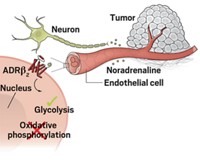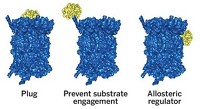Advertisement
Grab your lab coat. Let's get started
Welcome!
Welcome!
Create an account below to get 6 C&EN articles per month, receive newsletters and more - all free.
It seems this is your first time logging in online. Please enter the following information to continue.
As an ACS member you automatically get access to this site. All we need is few more details to create your reading experience.
Not you? Sign in with a different account.
Not you? Sign in with a different account.
ERROR 1
ERROR 1
ERROR 2
ERROR 2
ERROR 2
ERROR 2
ERROR 2
Password and Confirm password must match.
If you have an ACS member number, please enter it here so we can link this account to your membership. (optional)
ERROR 2
ACS values your privacy. By submitting your information, you are gaining access to C&EN and subscribing to our weekly newsletter. We use the information you provide to make your reading experience better, and we will never sell your data to third party members.
Biological Chemistry
Spotting Clotting
Detection strategy for blood clot regulator combines oligonucleotide, fluorescent probe and reversible inhibitor
by Carmen Drahl
May 23, 2011
| A version of this story appeared in
Volume 89, Issue 21
A three-molecule tag team could help physicians monitor a patient’s blood clotting during major surgeries such as hip replacements, scientists in Germany report (Angew. Chem. Int. Ed., DOI: 10.1002/anie.201007032). Excessive bleeding and excessive clotting lead to complications during surgery, so monitoring clotting could save both costs and lives. An enzyme called thrombin sits at the nexus of the complex biochemical network that controls clotting, but so far no diagnostic tests that measure thrombin activity are available. A team led by Bernd Pötzsch of the University Clinic Bonn and Günter Mayer of the University of Bonn surmised that previous thrombin testing hasn’t panned out because naturally occurring thrombin inhibitors rapidly inactivate thrombin in blood samples. So they developed a strategy that begins by adding a reversible thrombin inhibitor to a blood sample, which keeps natural inhibitors out of the picture. After attaching the inhibitor-thrombin complex to a surface via a two-pronged DNA aptamer, the team washes away the reversible inhibitor and measures the captured thrombin’s activity with a fluorescent probe. With their technique, the Bonn team kept tabs on thrombin activity in five patients undergoing hip replacements.





Join the conversation
Contact the reporter
Submit a Letter to the Editor for publication
Engage with us on Twitter